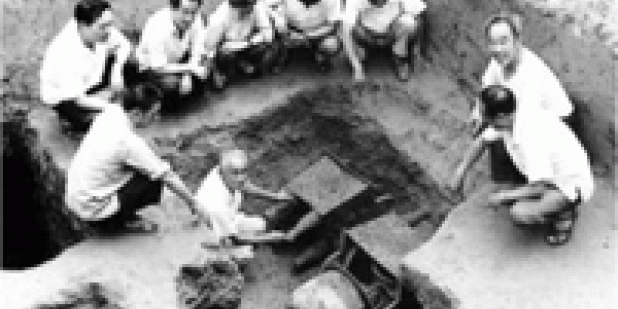Join us for a free one-day workshop for educators at the Japanese American National Museum, hosted by the USC U.S.-China Institute and the National Consortium for Teaching about Asia. This workshop will include a guided tour of the beloved exhibition Common Ground: The Heart of Community, slated to close permanently in January 2025. Following the tour, learn strategies for engaging students in the primary source artifacts, images, and documents found in JANM’s vast collection and discover classroom-ready resources to support teaching and learning about the Japanese American experience.
China's First Empire? Interpreting the Material Record of the Erligang Culture
Haicheng Wang explores the Erligang culture and its significance.
Where

In the last few decades Chinese archaeology has documented a wide spread of material culture called the Erligang culture after a type site in modern Zhengzhou. Large-scale dissemination of a distinctive material seems to have been fairly common at the beginning of civilizations, probably the best known instance being the “Uruk expansion” in ancient Mesopotamia. Additional close parallels are provided by the Indus Valley civilization in the Old World and the Olmec civilization in the New World. In all four cases, the homogeneity of material culture over a large area suggests something more than casual contact: something of great magnitude was taking place, an intense interaction of some kind. So far, however, specialists have reached no consensus as to the social mechanisms involved, no agreement as to how things, ideas, and/or people were spreading. Although writing seems to have been in use in all four civilizations, inscriptions are few and poorly understood, so it is only from material culture that we can hope to learn anything about the archaeological problem. By comparing the four material cultures, I hope to draw up a list of possible models for cultural expansion, models that might not occur to us if we focused just on one region. Two major questions will be addressed. What are the criteria for correlating archaeological remains with political structures? What is the logic of privileging elite objects or utilitarian utensils in describing and interpreting the evidence of expansion?
Wang Haicheng earned his MA at Peking University (2000) and PhD at Princeton (2007). He is currently a Postdoctoral Fellow in the Center for Chinese Studies at UC Berkeley.
Featured Articles
Please join us for the Grad Mixer! Hosted by USC Annenberg Office of International Affairs, Enjoy food, drink and conversation with fellow students across USC Annenberg. Graduate students from any field are welcome to join, so it is a great opportunity to meet fellow students with IR/foreign policy-related research topics and interests.
RSVP link: https://forms.gle/1zer188RE9dCS6Ho6
Events
Hosted by USC Annenberg Office of International Affairs, enjoy food, drink and conversation with fellow international students.
Join us for an in-person conversation on Thursday, November 7th at 4pm with author David M. Lampton as he discusses his new book, Living U.S.-China Relations: From Cold War to Cold War. The book examines the history of U.S.-China relations across eight U.S. presidential administrations.




